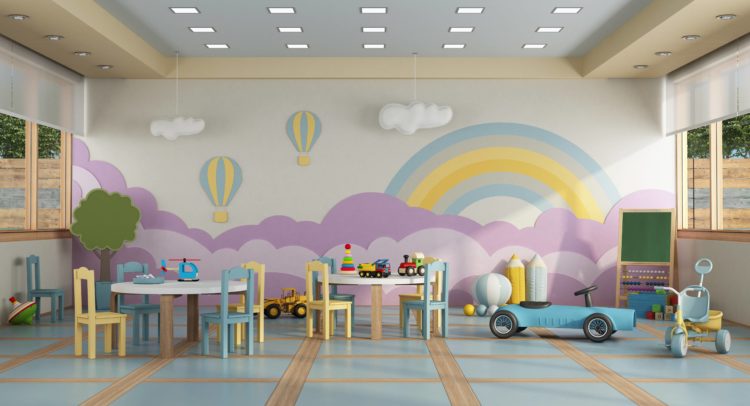
 By Amy DeNicola-Hickman
By Amy DeNicola-Hickman
“Is my child ready for Kindergarten?” Part Two Cognition
Two frequently asked questions during my meetings with families are: Is my child able to solve a problem? Can they sustain their attention long enough to participate in a Kindergarten class? These are skills in the Cognitive area of development. If you read the first article in this series you will remember that all children develop different skills at different paces. When asked this question I always smile, believe me all Kindergarteners have varied attention spans…they are supposed to at this stage of development. Kindergarten is the place where problem solving and attention to task grows.
Let’s make sure we are all on the same page when thinking about solving problems. The expectation for a 4-5 year old child would be that they can determine a strategy or solution to try to solve the problem and use similarities or differences to assist in this. Let’s look at an example, your child throws the ball up into a tree. This is a problem. Instead of fixing the problem for your child the parent asks how can we get the ball down? Your child says “a stick.” (possible solution) The parent holds up two sticks, a short one and a long one. Which one should we use? The child may say the short one. The parent has the child try with or without success and supports the child in choosing the longer stick if necessary. The parent and child have demonstrated problem solving strategies that are developmentally appropriate for this age group.
How do you as a parent support problem solving with your child? Use the magic words, “It looks like you have a problem here, what can you do to solve it?”
Spilled milk on the floor….support your child to solve the problem, what can you use to clean it up…paper towels, mop etc. Allow your child to solve the problem and clean it up
A missing piece on a board game….support your child to solve the problem, what could we use instead of the piece…a button or coin? Let’s find something
Two children wanting to play with the same toy…support your child to solve the problem, what can we do to give everyone a turn?…set a timer?…play together?
As your child is able to help with simple problems you can also support them using attributes or patterns that may assist them in solving the problem.
Spilled milk on the floor…is this a big spill or a small spill? Should we use the mop or the paper towels on this…If they are unsure try both and talk about it as you go…”look at that it only took two paper towels and we are all done” or “wow we are using a lot of paper towels should we see if the mop works better?”
Two children wanting to play the same toy…”how did we solve this problem when we were playing with the doll? Can we use that solution here?”
Problem solving occurs every day at home, as a parent you may be doing much of this naturally. Take notice of your child’s problem solving skills. Use the magic question to support them in solving problems more independently. This will support them in the skills they will continue to develop in Kindergarten.
Now let’s talk about attention span, this is one of my favorites. If you look very closely at a Kindergarten classroom lesson you will see that a “lesson” is really broken up into many small parts. A teacher may read a book to a whole group of children. The group then may choose a learning center to complete an activity. Each center will rotate on different learning activities. The teacher has broken the “lesson” in small parts with many activities that support the same topic. The teacher purposely plans these activities because all young children have short attention spans. Movement, different materials and activities are incorporated to allow children to learn the topic at hand in many different ways to support those short attention spans.
How do you as a parent support your child’s attention span? Support your child to finish what they started and expand their play.
When your child is playing with blocks or building materials play with them and ask questions to build upon their building. What are you planning to build? Should we make a plan? Should we draw a picture first? Or find a picture of a ____to help us build? What kind of blocks will we need to build? What could we use to make the flag at the top of the castle? Looks like you are done building for today, should we keep it out to work on tomorrow?
When you child is playing dress up as a fireman play with them and support a role to expand their play. I see you have on your fireman costume, where is the fire? What role can I play? Am I being rescued or am I another fireman? Who are we rescuing? What tools should we use to put out the fire? Act out the imaginary play with your child. You do not need costumes or special toys. You can make them yourselves making paper hats or coloring/painting a large box to make a fire truck together. This encourages attention span to a topic or activity and builds upon so many other developing skills in your child.
Remember changing the mode or material during the play does not mean you have lost your child’s attention. It is your child’s attention to the topic or play scheme that you want to build upon. And you as the parent get to play too! Enjoy the time spent supporting these skills. It is magical and will support our next topic, social and emotional skills.
Amy Lynn DeNicola-Hickman MS ECE, MS SPED, Admin Certification.
Special Education Administrator for Preschool
Greenwich Public Schools



